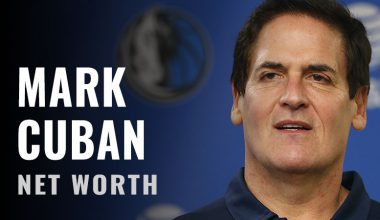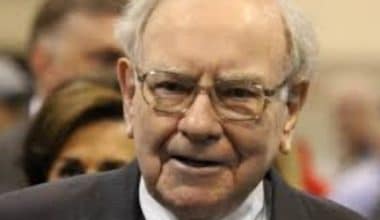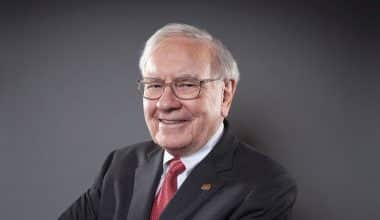The most famous investors have a history of consistently producing returns that have crushed the market. They reward the investors who put their money in their hands for their success. They are well-known for their amazing capacity to generate money.
We will discuss the world-famous and most famous investors and their portfolios so stay tuned!
Famous Investors
It’s not necessary to be an expert to make your first investment.
The world’s greatest investors follow tried-and-true strategies that are easy to understand and have a track record of success. Each has developed a straightforward strategy that they have consistently used over time.
They may even surprise novice investors with their investment beliefs and methods. Numerous people hail these names as famous investors since they are associated with achievement.
- Philip Fisher
- Gorge Soros
- Jack Bogle
- Peter Theil
- Ray Dalio
Now, let’s take a look at each investor with their portfolio
Most Famous Investors and Their Portfolios
#1. Philip Fisher
Philip Fisher was regarded as the Father of Growth Investments in the industry and frequently adopted the buy-and-hold strategy. He made a calculated investment in Motorola stock in 1955 because he believed it had a promising future for expansion. At the time of his death in 2004, Fisher still had shared.
According to his theory, it was essential to focus on a small number of companies in-depth rather than over-diversify to become a successful investor. Fisher was a clever networker who used his connections to find out as much as possible about a firm, supporting his investment decisions.
Invest like Philip Fisher:
- Invest in businesses that have room to grow.
- Make long-term investments.
- Data is essential.
- Less is more
#2. George Soros
George Soros is a titan of the investment world who shot to popularity in the early 1990s after placing a wager against the Bank of England. When the Bank of England artificially supported the British pound, the hedge fund maverick made one billion dollars in a single month by betting against it.
We’re not sure what qualifies him if that doesn’t make him one of the best investors in the entire globe. Soros is traditional and enjoys the erratic character of market investing.
Learn about the markets and central bank policy to invest like George Soros.
- Do your homework and try to profit from global trends.
- You can invest in currencies as well as businesses.
- Go with your instincts
#3. Jack Bogle
Jack Bogle has been a real champion for regular investors, so when you have an opportunity, be sure to thank him in writing. By forming the Vanguard Group in 1974, which produced the first index fund, the Vanguard 500, Bogle is the man who invented low-cost index investing for millions of investors just like you.
One of the first was Bogle, who abandoned the individual stock-picking approach in favor of an extensively diversified portfolio of index funds held for an extended time. Bogle’s legacy and financial contributions have solidified his standing as one of the top investors in the world.
Like Jack Bogle, invest:
- Diversify
- Keep expenses down
- Keep at it for the long run.
#4. Peter Thiel
The characteristics of successful investors vary widely. Thiel stands out from the other guys on this list because he chose to start his own business and engage in venture capital instead of making market investments. The man was the first investor in Facebook and co-founded not one but two billion-dollar businesses, Palantir and PayPal.
In his book Zero to One, Thiel discusses his investment philosophies, including the idea that a successful company should own some form of monopoly. He uses the example of Google, which dominates the search industry.
Be an investor like Peter Thiel:
- Develop firms with a strong monopoly in a certain market or make investments in such firms
#5. Ray Dalio
Ray Dalio, one of Wall Street’s top investors, currently manages more profitable hedge funds than Warren Buffett. He has a personal fortune that is thought to be about $15 billion and is the 88th richest person in the world. The largest hedge fund in the world, Bridgewater Associates, is his company and has about $160 billion in assets.
Taking several uncorrelated bets in markets around the world is Dalio’s method. Growth and inflation are the two segments Dalio divides the market into; each sector is then further divided into two based on whether the component in question is rising or dropping.
How to invest like Ray Dalio
- The ideal policy is one of honesty.
- To lessen the loss, diversify your holdings.
#6. Benjamin Graham
A pioneer of investing was Benjamin Graham. In the 1920s, he developed the idea of value investing, a strategy that places a premium on purchasing undervalued stocks.
The Intelligent Investor and Securities Analysis with David Dodd are two of Graham’s most well-known works on investing. Graham shaped Warren Buffett’s development as a value investor through his work as a fund manager and speaker at Columbia University.
#7. John (Jack) Bogle
The Vanguard Group was established in 1975 by Jack Bogle. He invented the no-load mutual fund, which by doing away with the need for outside brokerages, doesn’t impose a sales commission.
Along with that, he developed the first low-cost index fund, the Vanguard 500, whose objective was to replicate the performance of the S&P 500 in return for a relatively modest fee.
His strategy enables investors to get returns that are in line with the larger market without incurring a lot of costs, and it has only become more well-liked with the emergence of exchange-traded funds (or ETFs, a sort of index fund).
#8. Bill Ackman
Pershing Square Capital Management is a hedge fund managed by Bill Ackman. He has a track record of generating significant returns. Ackman produced a 17.1% annualized return between 2003 and 2021, which was much higher than the 10.2% annualized return of the S&P 500.
Ackman’s performance has suffered during the 2022 stock market sell-off, similar to that of many other investors, with his fund losing 1.7% in the first three months of the year. Even yet, the S&P 500 still underperformed by around three percentage points.
Ackman’s activist investing strategy is one of the secrets to his ongoing success. Ackman buys sizable holdings in publicly traded companies that, in his opinion, would be worth more if certain structural or operational changes were made.
#9. Carl Icahn
Like Bill Ackman, activist investor Carl Icahn buys sizable shares in publicly traded companies to compel the reforms he thinks will maximize shareholder value. Icahn gained notoriety as a “corporate raider” in the late 1970s and early 1980s, a person who plans hostile takeovers of businesses and then reduces expenses and sells assets to increase the value of his corporate raider’s shares.
Icahn concentrates his activism on businesses that he perceives to be undervalued due to poor management, and he frequently tries to compel changes to a business’s executive team and governance.
#10. Templeton, John
One of the top contrarian investors is John Templeton. He is renowned for purchasing 100 shares of each firm listed on the New York Stock Exchange during the Great Depression when trading for less than $1.
He became extremely wealthy thanks to that easy, audacious bet. In 1954, he established his most well-known mutual fund, the Templeton Growth Fund, which, over 38 years, generated yearly returns greater than 15%.
He also helped to build some of the biggest and most prosperous cross-border investment funds, helping to pioneer the concept of international investing. He ultimately sold Templeton Funds, his company, to the Franklin Group, now Franklin Resources.
#11. Warren Buffett
The most famous investor in the world, Warren Buffett, has amassed enormous wealth through his investments. Since Buffet was a disciple of Benjamin Graham, their approaches to investing are comparable. He concentrates on long-term value investing, and over 52 years, Berkshire Hathaway has generated an average annual return of 20.9%.
Because “nobody can take away what you’ve got in yourself, and everyone has potential they’ve not yet used,” according to Buffett, investing in one’s abilities is the best investment a person can make.
Since most people won’t be making most of their income from the market, obtaining the necessary skills is crucial for advancing individual professions. Buffett himself spent money on public speaking training.
Who Is The Most Famous Investor?
The greatest successful investor in history is regarded by many to be Warren Buffett.
Graham’s most well-known investor, Warren Buffett, is a former pupil and later a work colleague. He has cultivated a sizable following of regular investors through his fund management company, Berkshire Hathaway, and advanced value investing pioneer Benjamin Graham’s ideas.
Who Is The Most Profitable Investor?
Buffett Warren, As one of the richest investors in the world, Warren Buffett hardly needs an introduction. Buffett serves as the CEO and chairman of Berkshire Hathaway. This $500 billion conglomerate serves as the holding company for all of Buffett’s interests, including stock investments and fully owned businesses.
Who Is The Youngest Investor?
The venture capital associate at Alsop Louis Partners, Alex Banayan, 22, is a student currently enrolled in college. When he even shocked himself by getting a position as an associate at age 19, he was dubbed the youngest venture capitalist.
Who Is a Good Investor?
A good investor knows why and what they are investing in. They can continually add to their portfolio over time and have control over their entire investing strategy.
What Do the World’s Most Famous Investors Have in Common?
As this list demonstrates, anyone can become a very successful investor. On the other hand, the most famous investors have a long-term attitude, which is one of the keys to their success. Anyone can have a bad year, as several prominent investors experienced in 2022. The secret to success, though, is to persevere in adversity. The following graph demonstrates this:
| DECADE | S&P 500 price return | Return excluding the 10 best days per decade |
|---|---|---|
| 1930 | -42% | -79% |
| 1940 | 35% | -14% |
| 1950 | 257% | 167% |
| 1960 | 54% | 14% |
| 1970 | 17% | -20% |
| 1980 | 227% | 108% |
| 1990 | 316% | 186% |
| 2000 | -24% | -62% |
| 2010 | 190% | 95% |
| 2020 | 18% | -33% |
| SINCE 1930 | 17,715% | 28% |
Investors who exit the market and miss the market’s ten best days in any given decade outperform those who stick with it through the tough times. The smartest investors buy during difficult times to avoid missing out on the eventual comeback.
Another characteristic shared by famous investors is their focus on and mastery of a single investment strategy. Whether it’s picking value companies, growth stocks, or advocating for change as a prominent activist, these well-known investors generate outsized returns by leveraging their extensive financial knowledge and remaining focused on the tactics that have consistently produced profits.
Most Famous Investors FAQs
What are the five queries to research before investing?
Am I at ease with the degree of risk? Can I afford to lose my cash? Do I comprehend the investment, and may I withdraw my money without difficulty? Are my investments regulated? Am I safeguarded if my advisor or the investment provider goes out of business? Should I consult a financial advisor?
Why should I be an investor?
A successful strategy to invest your money and possibly increase your wealth is to open an investment account. Your money may see value growth that exceeds inflation if you make wise investment decisions. Compounding’s effectiveness and the risk-return trade-off are the main causes of investing’s higher growth potential.
Conclusion
Investing is done to build wealth and save for long-term objectives like retirement. An “investor’s mindset” is a crucial investment prerequisite. This entails being mentally prepared to face the uncertainty that comes with investment.
The famous investors listed above are the greatest people of all time, and you can learn one or two things by reading more about them.
- CASH ON CASH RETURN: Guide for Real Estate Investors
- Value Investing: Detailed Guide To Value Investing Strategy
- Retail Investors: How To Become One
- HOW TO GET INVESTORS: Complete Guideline For Startups
- HOW TO FIND INVESTORS: Proven Ways to Secure Investors for Your Business






